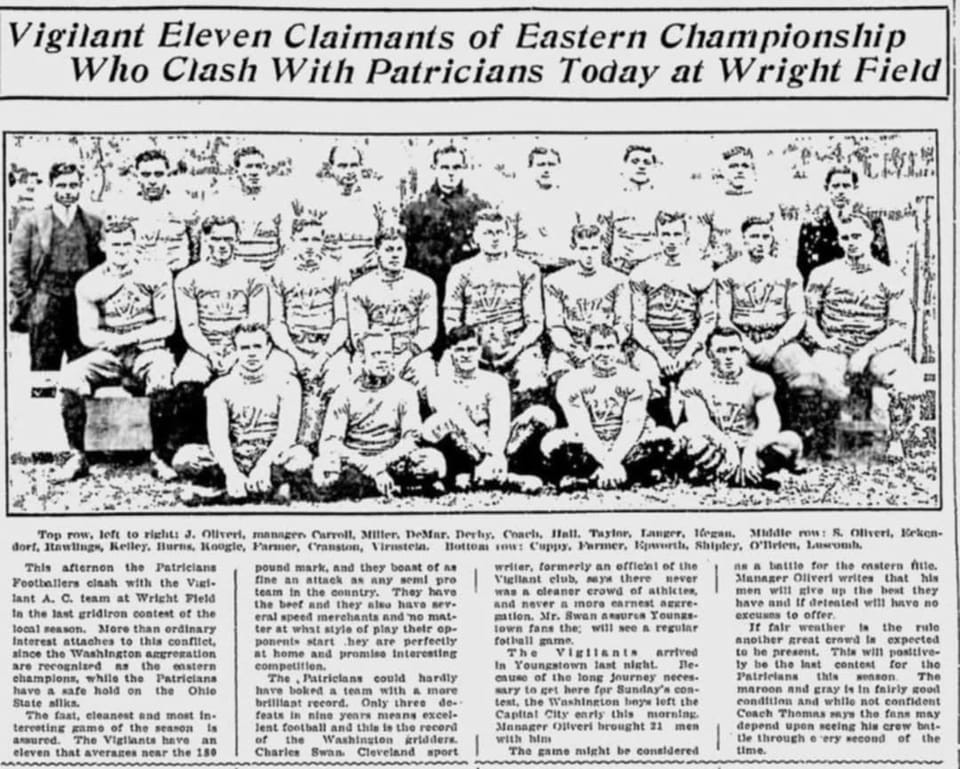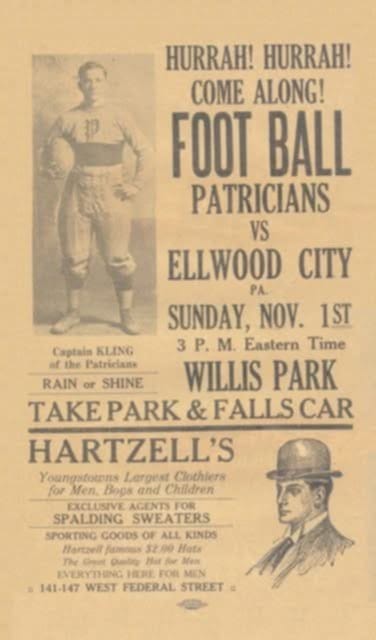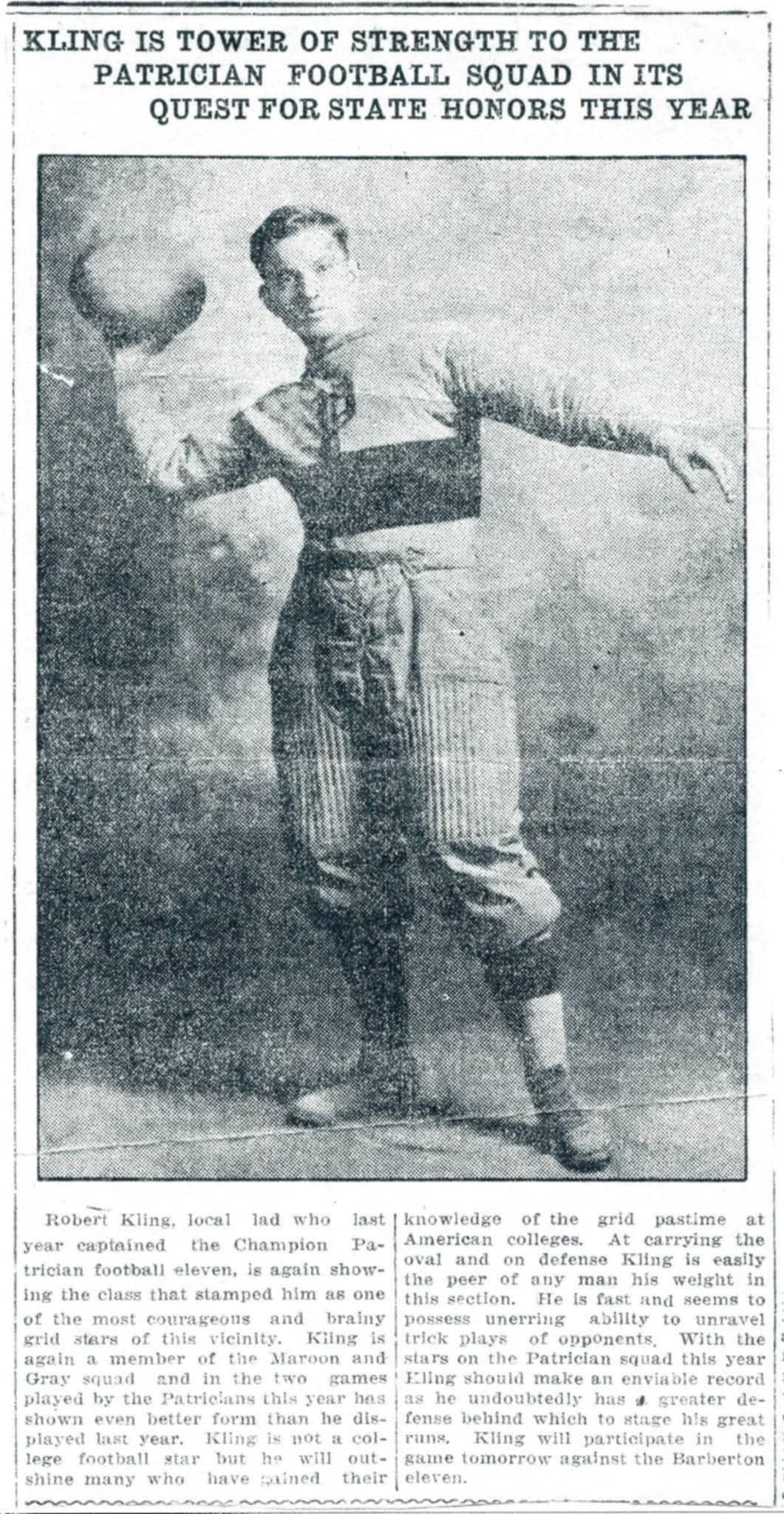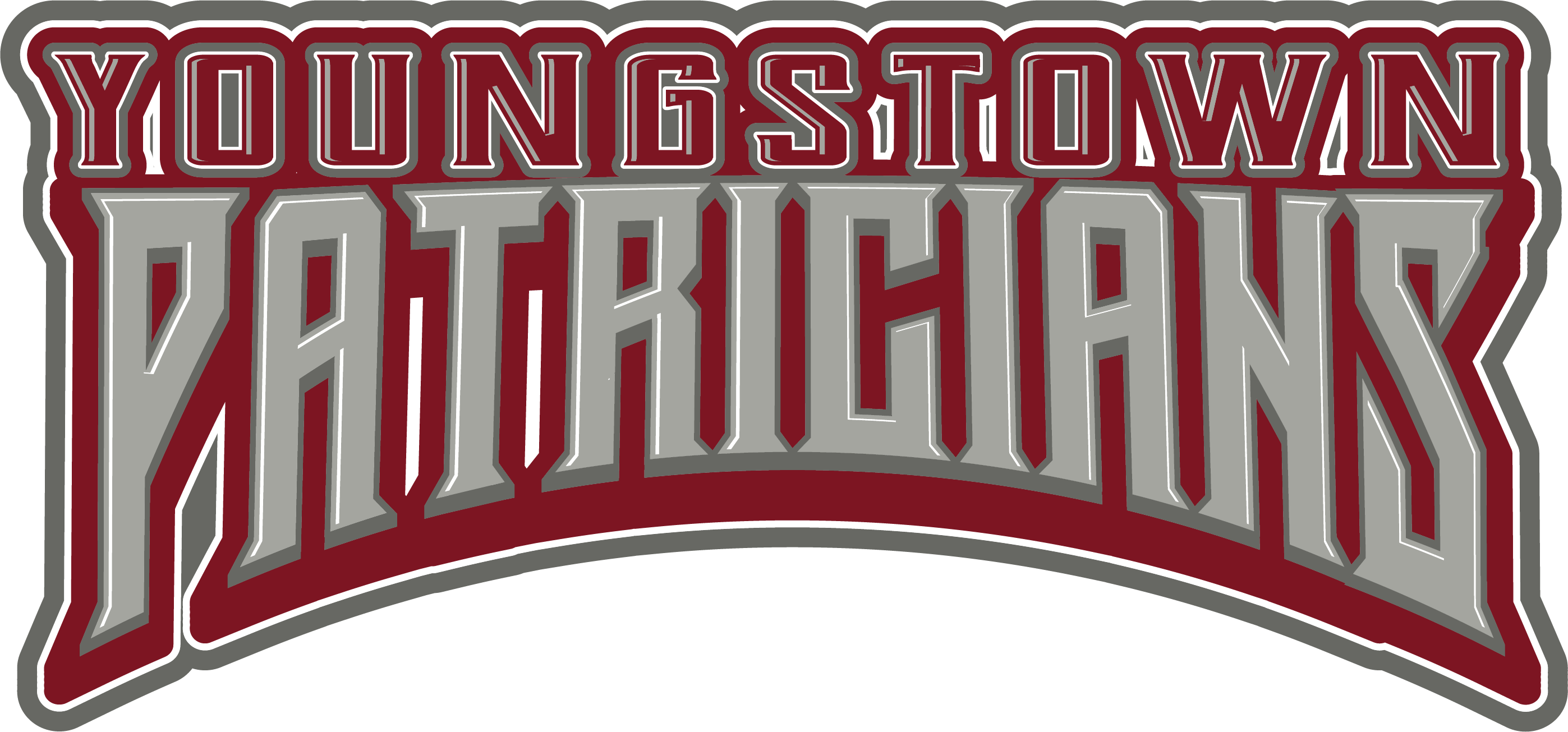Our History

The Youngstown Patricians were a semi-professional football team based in Youngstown Ohio. In the 1910s, the team briefly held the professional football championship and established itself as a fierce rival of more experienced clubs around the country, some of which later formed the core of the NFL. The Patricians football team motto was "With Malice to None and a Square Deal to all."
Origins
The football team was organized in 1911 by the Patrician Club, a men's organization connected to St Patrick's' Roman Catholic parish, on the city's south side. The Patricians were organized to provide recreational enjoyment for the Parish boys and fielded both a basketball team and the more famous football team. The church was founded in 1911 by Father Charles A. Martin who was an earnest supporter of outdoor sports. As sports historian Vic Frolund observes, the Catholic lay organization was designed "to advance the moral, social, and physical welfare of its members."Nevertheless, by 1914, the team associated with the Patricians Club had become a highly competitive enterprise that aggressively recruited some of the top athletic talent in the region. Shortly after the team's founding, its 18 players faced an eight-game schedule among other semi-professional and sandlot teams in Ohio and Pennsylvania. After scoring seven wins and one loss, the Patricians embraced a longer and tougher schedule of nine games.
Faced with more experienced teams like the Canton Bulldogs, the Mckeesport Olympics, the Pitcairn Quakers, and the Washington Vigilants, the Patricians increased their squad to 25 men and began to actively recruit well-established players. As Frolund writes: "Contracts were practically unheard of in the early days of the pro game. Consequently, a player could be with a different team every Sunday. His services were open to the highest bidder each week."In this competitive environment, the Patricians managed to secure seasoned players including Ray Miller, Elgie Tobin, Russel "Busty" Ashbaugh, and George Vedernack (Carlisle). This power-house team was led by player-coach Ray L. Thomas, a former star athlete at Youngstown's Rayen School.

Professional championship
Led by manager Joseph Omlor and coach Thomas, the Patricians entered the 1915 season with a confidence that was soon reflected in the local media. In October, when the "Pats" faced off with a rival club from Barberton, Ohio, one newspaper account stated: "It is no wonder the Patricians have aimed at the state titular emblem this season. With such a grand organization; one that so admirably combines weight speed, courage, and sheer ability, it is even to their discredit that do not go in quest of the titular honors of several states or the country at large."The article added:"The maroon and gray need fear no professional football team. The news report proved prophetic. That season, the Patricians won eight games and tied one. The most unexpected victory was a 13–7 win over the Washington Vigilants.
In a Youngstown Vindicator article from November 29, 1915, the Manager of the Vigilants, Joe Oliveri said "The Patricians defeated us fairly and squarely and we held the eastern title clearly beyond dispute. Youngstown has a remarkable gridiron machine and one that could go down through the east and make trouble for any eleven they met." Also from the article: "He declared football is no better supported in any city in the United States while in very few places are the fans as manifestly fair as they are right here in our own burg."
The following season, however, the Patricians faced predictably tough competition as other semi-professional teams sought to challenge their unofficial but widely acknowledged championship. Their season record was a less-than-stellar 7–4.

Peak and decline
The Patricians entered the 1917 season determined to win back the championship title and assembled a powerhouse team that appeared equal to the task.
The opening contest of the 1917 season was against Jim Thorpe and his Canton Bulldogs. The game, which took place at Canton's Wright Field, drew a crowd of 7,000 fans. As Frolund notes, player-manager Thorpe, "who very seldom played a full game, played every minute of this one." He adds that the Bulldogs won a narrow victory in a contest where "the lineups read like a who's-who of post-graduate football, circa 1917." As sports historian Keith McClellan writes: "Although the Canton Bulldogs gained 168 yards with their rushing attack and passed for an additional 82 yards, they could not cross Youngstown's goal for a touchdown. The Youngstown defense was outstanding whenever Canton threatened to score. Howard 'Cub' Buck's drop kick from the 15-yard line in the first period produced the only points of the game. Three times, Bart Macomber tried to tie the score with a field goal but failed each attempt. Canton won 3–0."
In the wake of this narrow defeat, the Patricians secured a victory over the Ohio Tigers, with a score of 14–6. In another contest with the world-champion Bulldogs later that season, however, the Patricians suffered a devastating loss of 13–0. Canton achieved this victory without the help of Thorpe, who was sidelined by a leg injury. Worse yet, the Youngstown team lost several of its brightest stars, including Cofall, to the Massillon Tigers. Sports historian McClellan observes that "a season that began with such high hopes ended with an unseasonable snowstorm and a modest 4–3 record."Meanwhile, the wave of recruitment that came with America's entry into War World 1, along with a flu pandemic that led to restrictions on travel and large gatherings, temporarily slashed the ranks of the nation's professional and semi-professional teams. On June 24, 1922, the Youngstown Patricians were granted an NFL franchise in the new league but were unable to raise the funds and never fielded a team.
Legacy
The Patricians' effort to regroup under coach-manager Thomas unraveled in the wake of a 27–0 defeat at the hands of the Massillon Tigers on October 5, 1919. As Frolund notes, a team that was to be managed by another Patricians alumnus, Elgie Tobin, received a National Football League franchise, which had a schedule laid out for the 1922 Nfl Season. The project collapsed without explanation, and the team never played. While the area saw a brief revival of semi-professional football in the 1970s (just before the city's industrial decline) with the organization of the Youngstown HardHats and more recently the fully professional Mahoning Valley Thunder of the AF2, the Patricians club—at least during its peak years—was the closest that Youngstown would come to producing a nationally competitive professional football team.
Over the years, the nearby Pro Football Hall of Fame has had several displays honoring the Youngstown Patricians including highlighting their championship 1915 team as well as one titled "A Parish Turns Pro."
